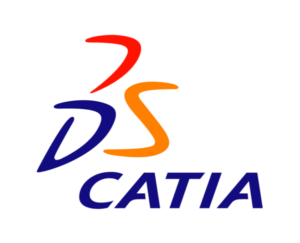+91-9350180451 +91-7827552837 Call Now!
- Home
- Our Mission
- Courses
- Software
- Services
- 3D Printer
- Admissions
- Contact
- Blog
CATIA is the item plan programming created and made by Dassault Systemes. This is a worldwide programming organization situated in France. It is a worldwide and broadly utilized programming that conveys 3D plan, Computer-helped designing arrangements, PLM, and Computer-supported assembling arrangements. The product is regularly utilized in assembling businesses and Original Equipment Manufacturers (OEMs) to increment planning, breaking down, and overseeing new items.
It empowers item planning and client experience by including a few viewpoints in item plan creation and permitting different choices to improve their default apparatuses during the course of item advancement. Consequently, this product serves best for modern and innovative planners, framework designers, and mechanical architects. This product likewise gives a 3D plan air that permits social and web based sharing of item plans and coordinated efforts on item demonstrating.
Item Lifecycle Management (PLM) is a benchmark set involved by businesses to effectively control upset in designing and limit producing costs. It acts as an establishment for an idea, item definition, assembling, recreation, and reseller’s exchange information found inside different lifecycle phases of an item. It likewise gives the general and mathematical information associated with an item’s lifecycle stage.

Sketcher Workbench
Invoking the Sketcher Workbench
Tool Setting the Sketcher Workbench
Understanding Sketcher Terms
Drawing Sketches Using Sketcher Tools
Drawing Display Tools
BASE FEATURES
Applying Geometrical Constraints
Analyzing and Deleting Over-Defined Constraints
Exiting the Sketcher Workbench
Creating Base Features by Extrusion
Creating Base Features by Revolving Sketches
Dynamically Rotating the View of the Model
Modifying the View Orientation
Display Modes of the Model
Creating Sections Dynamically
Importance of Sketching Planes
Reference Elements Reference
Other Sketch-Based Features
Editing Features of a Model
Measuring Elements
Transformation Features
Working with Additional Bodies
Need of Surface Modeling
Wireframe and Surface Design Workbench
Workbench Creating Wireframe Elements
Creating Surfaces
Operations on Shape Geometry
Surface Operations
Solidifying Surface Models Adding
Assembly Modeling
Creating Bottom-up Assemblies
Creating Top-down Assemblies
Editing Assemblies Deleting
The Drafting Workbench
Workbench Type of Views
Generating Drawing Views
Generating the Exploded View
Working with Interactive Drafting in CATIA
Editing and Modifying Drawing Views
Modifying the Hatch Pattern of Section Views
Inserting Sheets in the Current File
Inserting the Frame and the Title Block
Adding Annotations to the Drawing
Editing Annotations
Generating the Bill of Material (BOM)
Generating Balloons
The Sheet metal Component
Metal Workbench Setting Sheet Metal Parameters
Introduction to Sheet Metal Walls
Creating Swept Walls
Creating a Bend
Bend From Flat
Creating Rolled Walls
Folding and Unfolding Sheet Metal Parts
Creating Flat Patterns of Sheet Metal Components
Viewing a Sheet Metal Component in Multiple Windows
Using Views Management
Stamping

Join 100% Job-Oriented CATIA course in Delhi. Become tech-savvy with Cadguru and learn from Trainers having 10+ years of experience.
